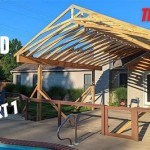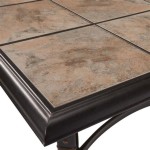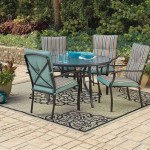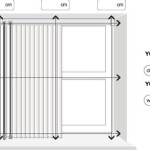How To Effectively Block Sun From a Patio Door
Patio doors, while enhancing a living space with natural light and providing easy access to outdoor areas, can often become a significant source of unwanted heat and glare. Excessive sunlight exposure through these large glass surfaces can lead to a range of issues, including increased energy bills as air conditioning systems work harder to maintain a comfortable temperature, fading of furniture and flooring, and general discomfort due to bright, direct sunlight. Implementing effective strategies to block sunlight from a patio door is therefore crucial for improving home comfort and energy efficiency. Numerous methods exist, each with its own set of advantages and disadvantages depending on individual needs, budget, and aesthetic preferences. This article will explore several effective solutions for minimizing the impact of solar radiation entering through patio doors.
Understanding the Problem: Solar Heat Gain and Glare
Before delving into solutions, it’s essential to understand the underlying problem. Solar heat gain occurs when sunlight passes through glass, warming the interior surfaces of a room. This phenomenon is more pronounced with larger glass areas like patio doors, effectively turning the affected room into a miniature greenhouse. The heat absorbed by furniture, flooring, and other surfaces is then radiated back into the room, further increasing the overall temperature. Glare, on the other hand, refers to the intense brightness created by direct sunlight, which can be visually uncomfortable and make it difficult to see screens or read comfortably. Both solar heat gain and glare contribute to an undesirable living environment. The intensity of these issues can vary depending on the direction the patio door faces, the time of year, and geographical location.
East-facing doors, for example, receive direct sunlight in the morning, leading to a rapid temperature increase during the early hours. West-facing doors face the opposite situation, experiencing intense afternoon sun and prolonged heat exposure. South-facing doors receive a consistent amount of sunlight throughout the day, particularly during the summer months. North-facing doors typically receive the least amount of direct sunlight. Evaluating the specific orientation of the patio door is a critical first step in choosing the most effective sunlight blocking strategies.
Interior Solutions: Blinds, Shades, and Curtains
One of the most common and readily available methods for controlling sunlight is through the use of interior window treatments such as blinds, shades, and curtains. Each of these options offers different levels of light control, insulation, and aesthetic appeal. Understanding the nuances of each type is crucial for making an informed decision.
Blinds consist of horizontal or vertical slats that can be tilted open or closed to regulate the amount of light entering the room. Materials commonly used for blinds include wood, metal, and vinyl. Metal blinds offer excellent light control and durability but can be prone to heat absorption. Wood blinds provide a more natural aesthetic but may be susceptible to warping in humid environments. Vinyl blinds are a cost-effective option, resistant to moisture and relatively easy to clean.
Shades, unlike blinds, are made of a continuous piece of fabric that can be raised or lowered to control light. Various types of shades are available, including roller shades, roman shades, cellular shades, and solar shades. Roller shades are simple and versatile, offering varying degrees of light blockage depending on the fabric used. Roman shades provide a more tailored and elegant look, with fabric folding into pleats when raised. Cellular shades, also known as honeycomb shades, feature a unique cellular structure that traps air, providing excellent insulation and energy efficiency. Solar shades are specifically designed to block UV rays and reduce glare while maintaining a degree of visibility to the outside. The choice of shade depends on the desired level of light control, insulation, and aesthetics.
Curtains are fabric panels that hang from a rod and can be drawn open or closed to control light. They offer a wide range of styles, fabrics, and colors, making them a versatile option for any décor. Blackout curtains are specifically designed to block virtually all light, providing maximum darkness and privacy. Thermal curtains are lined with a special material that helps to insulate the room, reducing heat gain in the summer and heat loss in the winter. The effectiveness of curtains depends on the fabric's density and color. Darker colors tend to absorb more heat, while lighter colors reflect it. Layering curtains with a sheer inner layer and a heavier outer layer can provide both light control and privacy.
Exterior Solutions: Awnings, Overhangs, and Solar Screens
Exterior solutions offer a more proactive approach to blocking sunlight before it even reaches the patio door. These methods can be particularly effective in reducing solar heat gain, as they prevent the sun's rays from penetrating the glass in the first place. Awnings, overhangs, and solar screens are common exterior options.
Awnings are coverings that extend from the wall above a patio door, providing shade and protection from the elements. They can be made from various materials, including fabric, metal, and plastic. Retractable awnings offer the flexibility to adjust the amount of shade depending on the time of day and weather conditions. Fixed awnings provide a permanent shading solution, requiring less maintenance but offering less adjustability. The color and material of the awning significantly impact its effectiveness. Lighter colors reflect more sunlight, while darker colors absorb more. Durable materials like acrylic and solution-dyed fabrics are resistant to fading and mildew.
Overhangs are architectural features that extend from the roofline, providing shade to the patio door below. The effectiveness of an overhang depends on its depth and orientation. A well-designed overhang can block direct sunlight during the hottest parts of the day while still allowing some sunlight to enter during the morning and evening hours. The design of the overhang should take into account the angle of the sun at different times of the year to maximize its shading potential.
Solar screens are mesh-like coverings that are installed on the exterior of windows and doors to block sunlight and reduce heat gain. They are typically made from a tightly woven fabric that allows visibility to the outside while blocking a significant portion of the sun's rays. Solar screens are available in various densities, with higher densities blocking more sunlight but also reducing visibility. They are a durable and effective solution for reducing solar heat gain without completely blocking the view. Solar screens can be custom-made to fit any size patio door and are relatively easy to install.
Advanced Solutions: Window Films and Specialized Glass
For a more permanent and technologically advanced approach to blocking sunlight, window films and specialized glass options are available. These solutions are designed to reduce solar heat gain and glare while maintaining a clear view and maximizing energy efficiency.
Window films are thin, adhesive films that are applied to the surface of glass to reduce solar heat gain, block UV rays, and reduce glare. They are available in various tints and reflectivities, allowing homeowners to customize the level of light control and privacy. Reflective window films are designed to reflect a significant portion of the sun's rays, reducing heat gain and glare. Non-reflective window films offer a more subtle appearance while still providing UV protection and heat reduction. The application of window films is a relatively simple process but requires careful cleaning and preparation to ensure a smooth and bubble-free finish. Professional installation is recommended for optimal results and longevity.
Specialized glass options, such as low-emissivity (low-E) glass and tinted glass, are designed to reduce solar heat gain and improve energy efficiency. Low-E glass is coated with a thin, transparent coating that reflects infrared radiation, reducing heat transfer through the glass. Tinted glass is manufactured with a colored tint that absorbs a portion of the sun's rays, reducing heat gain and glare. Both low-E glass and tinted glass can be used in new patio door installations or as replacements for existing glass. The choice between these options depends on the desired level of light control, energy efficiency, and aesthetic preferences. Low-E glass offers excellent energy efficiency with minimal impact on visibility, while tinted glass provides a more dramatic reduction in glare and heat gain but can also reduce the amount of natural light entering the room.
Implementing one or a combination of these strategies can significantly reduce the impact of sunlight on a living space, creating a more comfortable and energy-efficient home environment. The optimal solution will depend on individual needs, budget, and aesthetic considerations, tailored to the specific orientation and characteristics of the patio door in question.

Best Shades For Sliding Glass Doors The Shade Store

Patio Door Shades Window Treatments For Sliding Glass Doors

Best Shades For Sliding Glass Doors The Shade Store

Blinds For Doors Sliding Shademonster
4 Modern Ways To Cover Your Glass Door For Privacy Reef Window Treatments

Beat The Heat Solar Screens Is Your Sun Control Specialist

26 Patio Shade Ideas To Help You Stay Cool Timbertech

Best Shades For Sliding Glass Doors The Shade Store

Sliding Glass Door Treatments Skyline Blinds For Doors

Patio Door Shades Window Treatments For Sliding Glass Doors








